Distinct genes in each chicken breed determine eggshell color. Hens, regardless of color, require a well-balanced diet to lay eggs that have strong, protective shells. Collecting fresh farm eggs is much more enjoyable when the shells come in a rainbow of colors.
Colored eggs are all the rage in the backyard chicken world, from olive to lovely blue, speckled to chocolate brown. Many chicken raisers keep a range of breeds because of this. Regardless of shell color, your hens require calcium in their layer feed to lay and stay strong.
1. Araucana

- Lifespan: 7 – 8 years
- Weight: 4 – 5 lbs
- Egg Production: Good
- Egg Size: Medium
- Egg Color: Blue, Green
If a chicken lays blue eggs, it most likely carries the Araucana gene. Although the breed’s origins are unknown, it is thought to have originated in Chile. Araucanas have no rump and often have tufts on their backs.
The Araucana breed of chicken, with its lack of a tail and unique genetics, is an unusual-looking bird that lays desired blue eggs. While these characteristics are attractive, low fertility and hatch rates make breeding these hens difficult.
Temperament
Araucanas have an extremely friendly demeanor. They are docile, intelligent, and non-aggressive, making them ideal backyard companions for both children and adults.
They are known as energetic birds that are good foragers and flyers. Araucana hens are known for going broody and making excellent moms.
Egg Laying and Meat Production
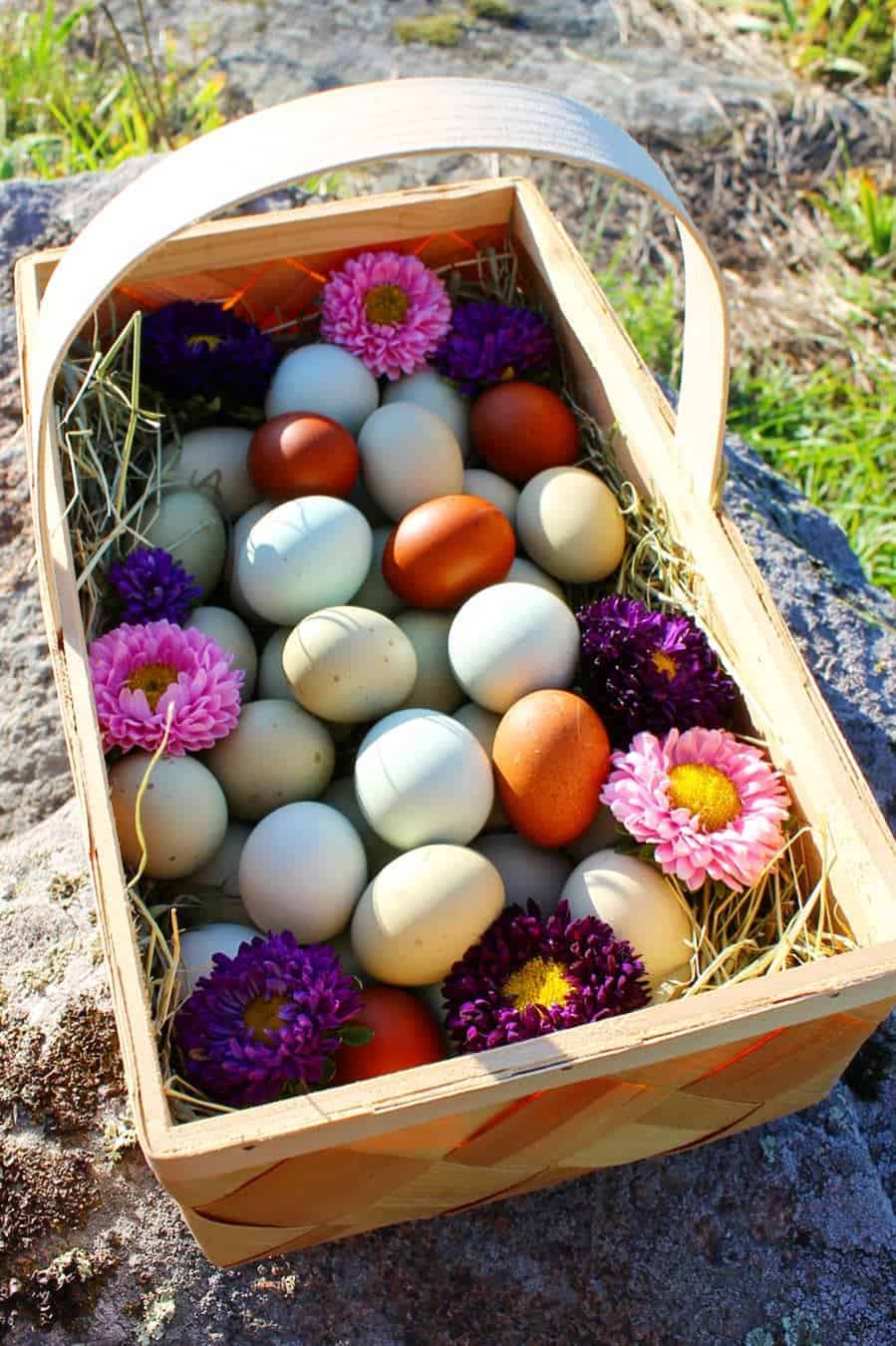
Araucanas are chickens that lay colored eggs, specifically blue-colored eggs. The color is not just a coating; it pervades the entire shell.
The color of the blue varies. Some are grayish in color, light turquoise blue in tone, and violet-blue in tone, while others are green eggs with a blue tint.
Araucana hens lay a lot of eggs. A single hen may lay 200 gorgeous blue eggs every year on average!
The Araucana breed has less meat because it can barely grow to roughly 5 pounds. Consider purchasing a Wyandotte or a Plymouth Rock instead if you plan to raise a chicken for your meat.
2. Ameraucana
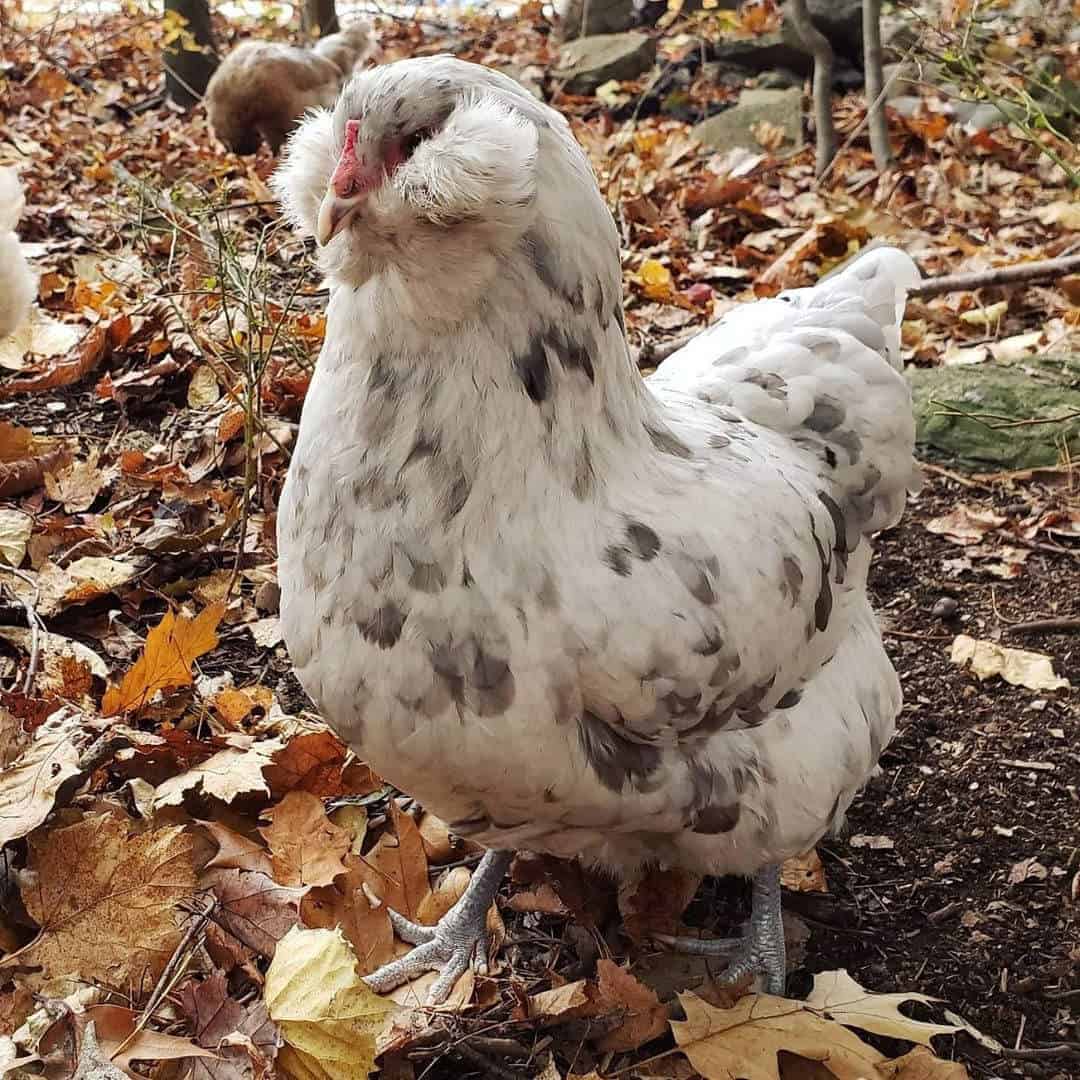
- Lifespan: 7 – 8 years
- Weigh: 5 – 7 lbs
- Egg Production: Good
- Egg Size: Medium to Large
- Egg Color: Blue
The Ameraucana is of Araucana origin. They are produced as a cross between the breeds with Araucana as one paired with another breed.
The Ameraucana also lays blue-colored eggs similar to the Araucana.The chicks have a cluster of small feathers or hairs, tight muffs, and a weird beard.
This feathery bird has a pea-like comb and can lay 200 blue-colored or greenish eggs every year.
The medium-sized blue eggs of the Ameraucana breed are well-known. However, while this hybrid chicken breed can produce colored eggs, its huge size and low broodiness level may or may not be suited for your garden.
Temperament
Ameraucanas are docile in general. When shocked or placed in unfamiliar surroundings, they can become rather flighty.
The Ameraucana hen isn’t the best setter when it comes to broodiness. You don’t need to be concerned if you’re only interested in collecting eggs for food.
Overall, this breed is a fantastic choice if you want to add a variety of personalities to your flock.
Egg Laying and Meat Production
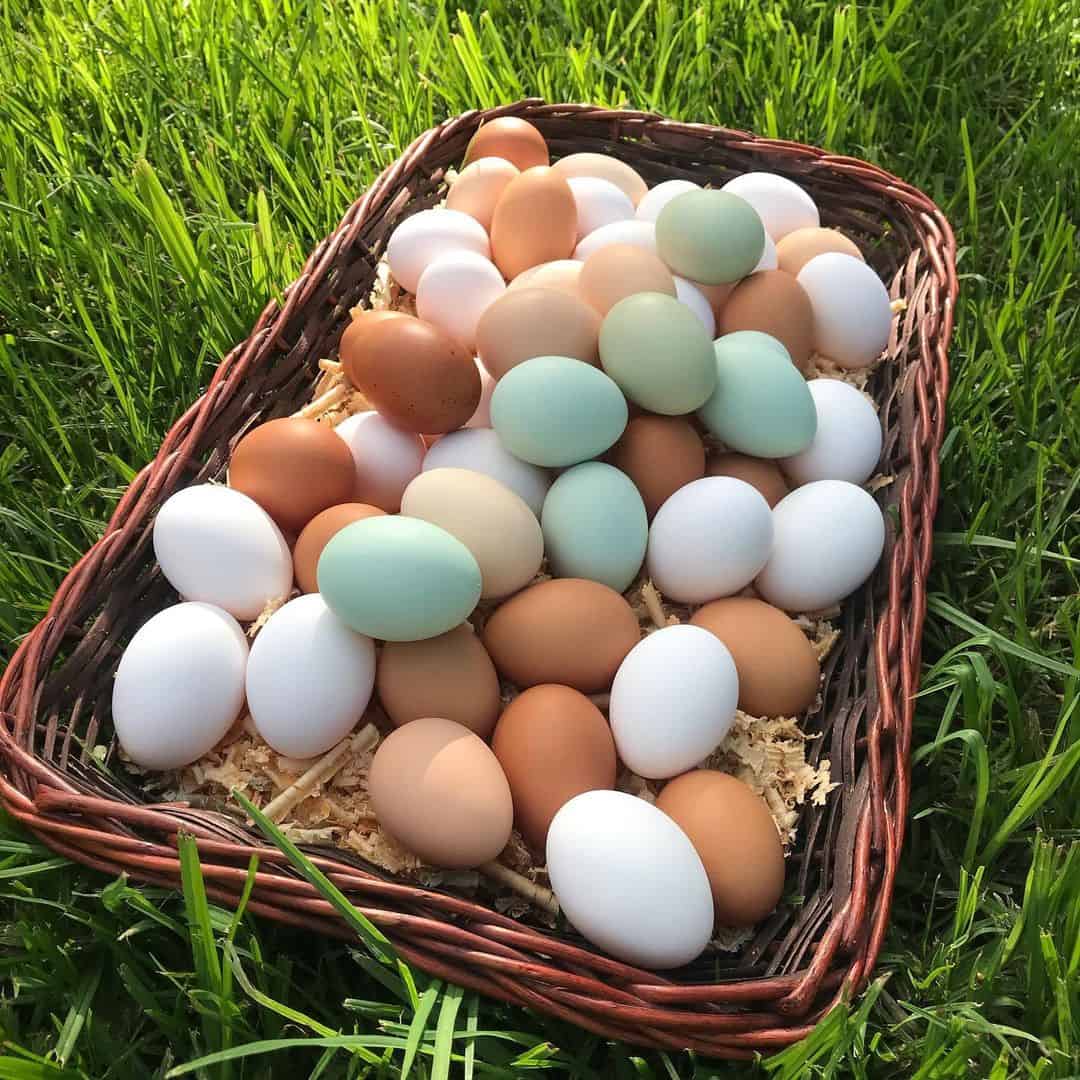
Breeders and poultry aficionados alike lust after the blue Ameraucana chicken egg hue.
When it comes to egg-laying, Ameraucanas are excellent layers, with hens laying between 150 and 200 medium to large eggs every year and usually all year.
3. Easter Egger
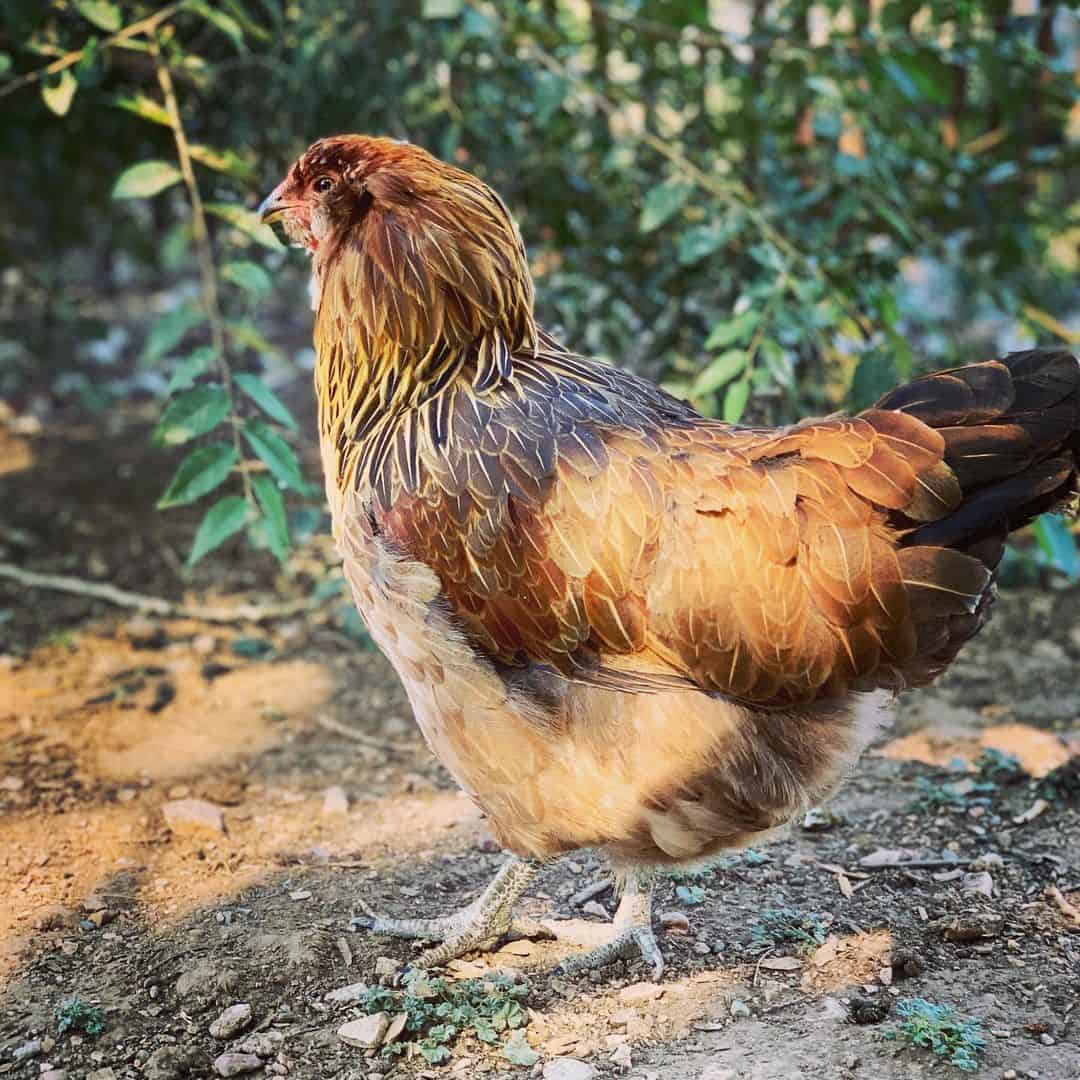
- Lifespan: 5 – 8 years
- Weigh: 4 – 8 lbs
- Egg Production: Good
- Egg Size:Medium
- Egg Color: Blue, Green, Olive, Pink
Easter Egger is the result of crossing an Araucana or Ameraucana with another chicken breed. They preserved the blue egg gene but picked up a few more along the way. This genetic tangle provides
Easter Eggers has a wide range of possible egg colors as well as some of the most colorful eggs available. An Easter Egger is a breed of chicken raised with one parent who carries the trait of blue eggs.
Temperament
They are pleasant, inquisitive, and gentle. Eggers aren’t bullies, but they can be picked on by more aggressive kinds, so keep an eye on them while they’re with other birds.
This chicken breed is friendly, curious, and mild-mannered. They may even approach you and ask for cuddles or treats. Easter Eggers have a variety of characteristics, although they always have little red wattles, clean legs, four toes, and most have a tail.
Egg Laying and Meat Production
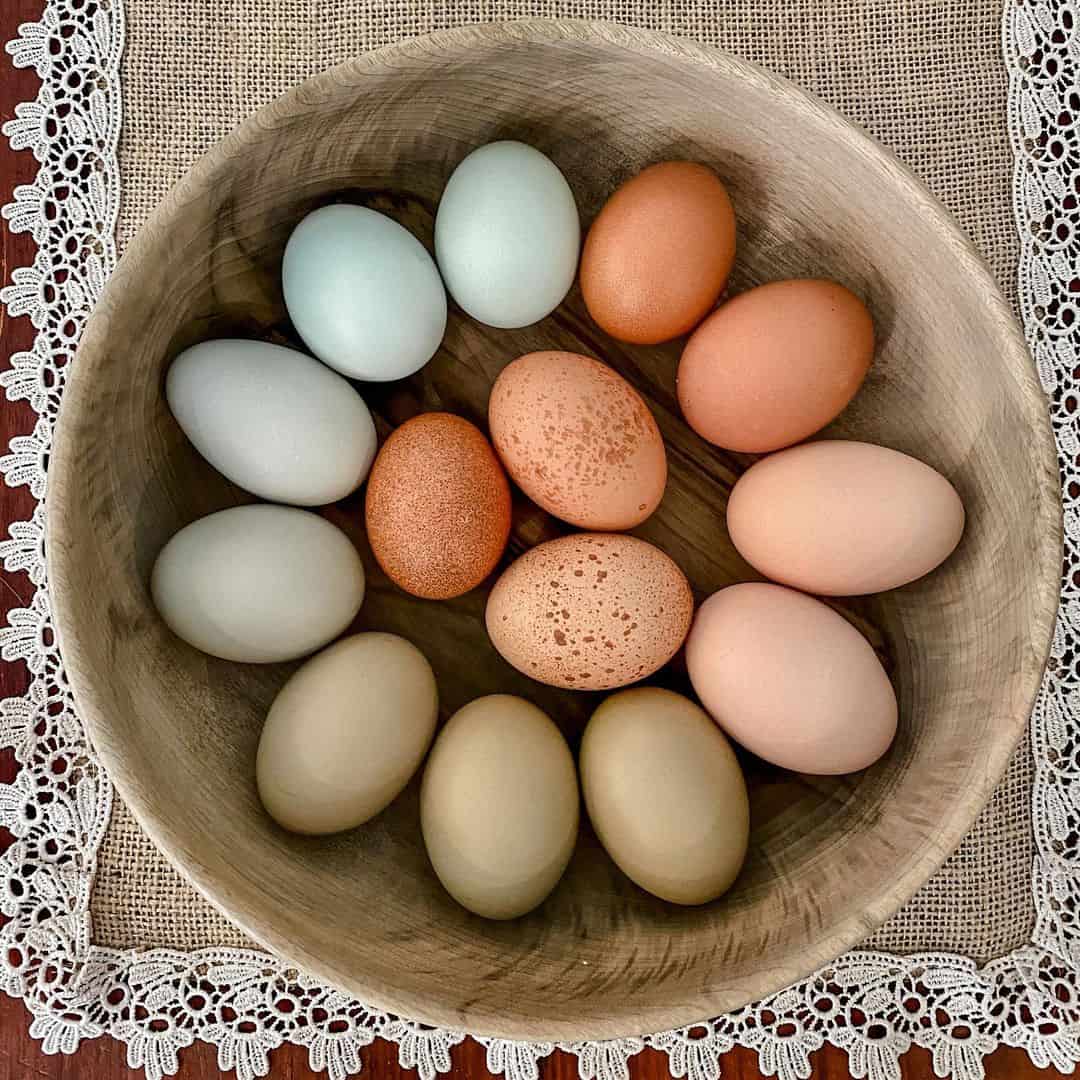
Easter Eggers are good layers, laying four big eggs each week (about 200 per year).
You should be aware that whichever color eggs the hen lays will be the only color she lays – rainbow assortments are not available. However, if you have numerous chickens, your egg box is likely to have a wide range of hues.
Because they rarely go broody, they spend the majority of their time laying those delicious eggs.
4. Cream Legbar

- Lifespan: 5 – 10 years
- Weigh: 4.5 – 5.5 lbs
- Egg Production: Good
- Egg Size: Medium
- Egg Color: Blue
Cream Legbar is one of the most well-known auto-sexing chicken breeds. This implies that the chick’s sex is visible on the day they hatch, rather than developing different features as they get older. Legbars in the cream have a lovely hue.
These chickens have an unusual color scheme of black, gray, and tan. The roosters have a distinct barring pattern on their backs. Legbar chicks in cream come in brown and red hues. Chipmunk striping runs down their backs.
Temperament
Some sources describe them as flighty, agitated, and noisy, while others describe them as docile, friendly, and easy to manage. Cream Legbars are generally amiable, easy to handle, and gregarious. They do, however, have a wild side, which is why they don’t like being confined. Cream Legbars are prolific layers, laying an average of 4 medium-sized light blue eggs each week, or roughly 230 eggs per year.
Egg Laying and Meat Production
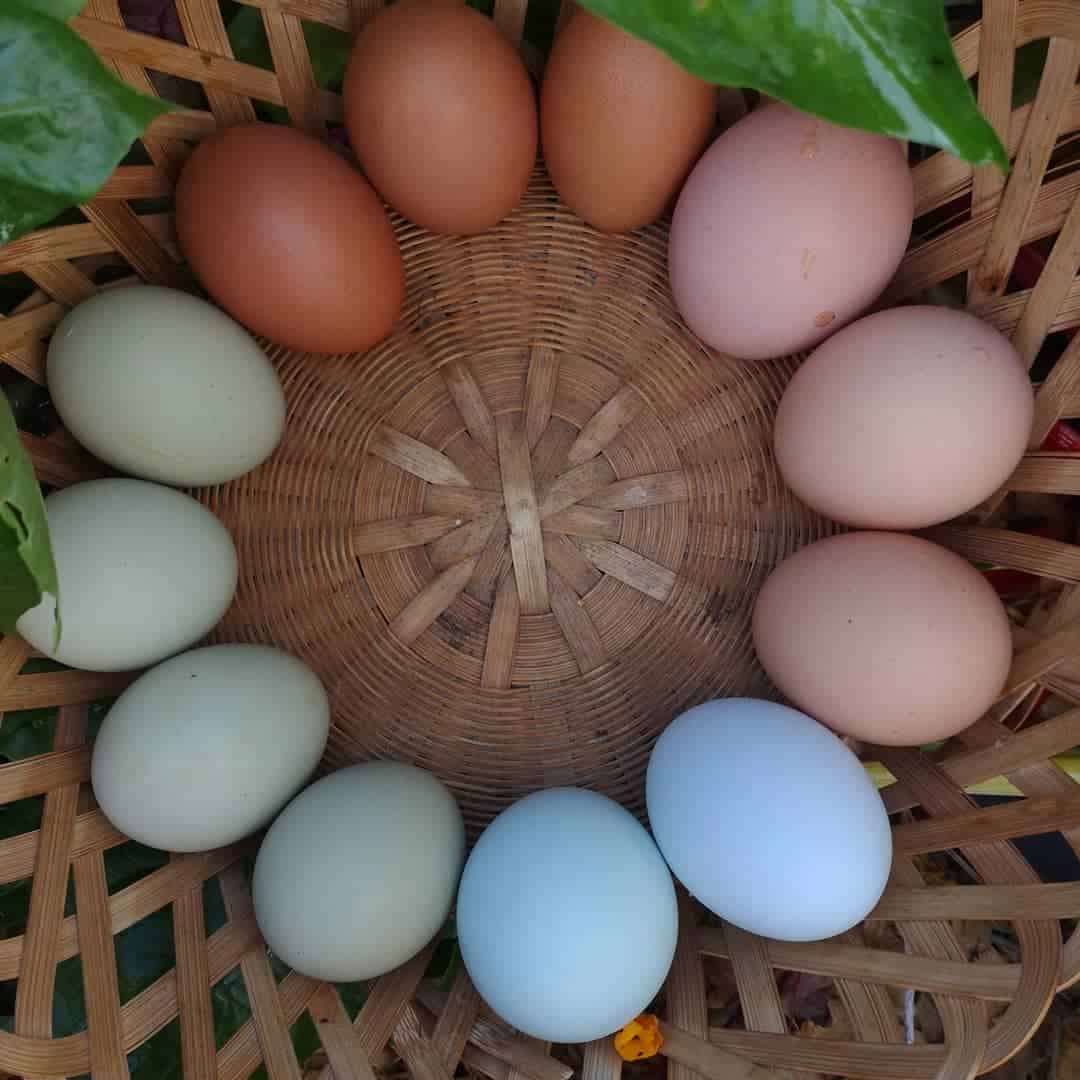
The egg color of Cream Legbars is well-known. Light blue or light green eggs are laid by these birds. To be clear, each bird will lay either blue or green eggs (not both colors), yet blue-egg-laying chickens or green-egg-laying hens are also possible.
Cream Legbars begin laying around 5-6 months and lay 150-200 eggs every year. Furthermore, some hatchery strains may lay even better.
5. Light Sussex

- Lifespan: 8 – 10 years
- Weigh: 7 – 9 lbs
- Egg Production: Good
- Egg Size: Large
- Egg Color: Cream to Light brown
The Light Sussex is a lovely chicken species that is frequently regarded as the classic backyard breed.
The Sussex hen is a charming and well-loved breed that has been around for at least a couple of centuries. It was bred to be a dual-purpose hen that excels at both.
It has a fascinating backstory and has weathered the ups and downs of the poultry industry’s fads.
Because of its reputation as a consistent layer, fine meat bird, and mild personality, the Sussex has experienced steady, if not spectacular, success for many years and is ready to expand its influence in the United States.
Temperament

The Sussex is a calm, confident, and friendly bird that is simple to handle. They enjoy foraging and are excellent at it, getting much of their food from the garden, making them frugal hens. Sussex is a tough breed in general, especially when it comes to the cold. Summer heat is tolerable as long as there are shady places to rest and, of course, cool water.
They’re not aggressive birds, and even the roosters are said to be laid-back.
Egg Laying and Meat Production
Every week, Sussex will provide you with 4-5 big brown eggs.
The best part is that they will continue to lay well into the winter when most other chickens have stopped laying for the season.
6. Olive Egger
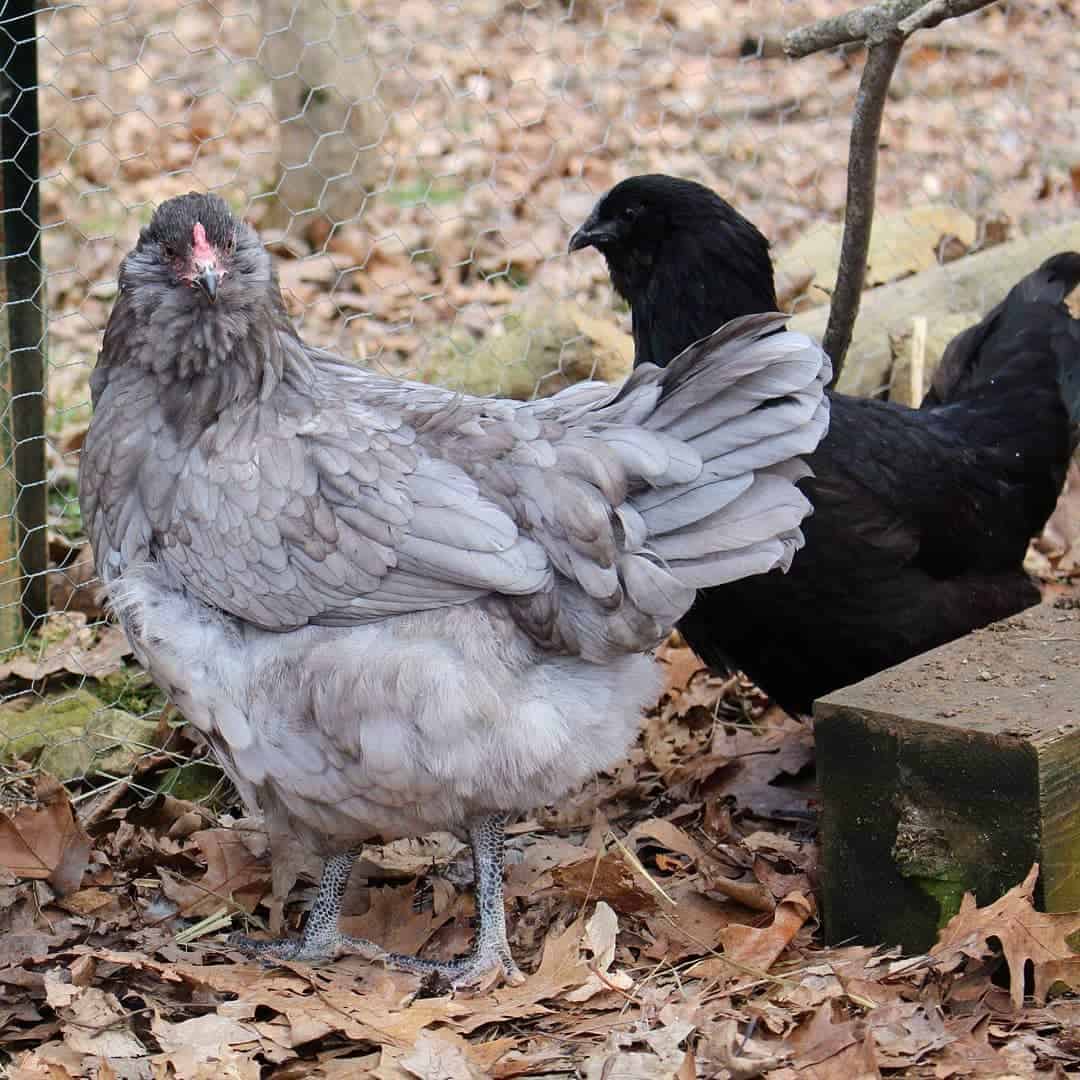
- Lifespan: 7 – 8 years
- Weigh: 6 – 8 lbs
- Egg Production: Good
- Egg Size: Medium to Large
- Egg Color: Olive, Green
Olive Egger Chickens are produced by crossing two separate breeds: a cockerel from brown egg stock and a hen that lays blue eggs. Olive Eggers come in an incredible range of shapes, sizes, and colors and can be huge birds or bantams. They are developed solely for the production of olive green eggs.
Olive Eggers are a breed of bird that produces olive-drab shelled eggs. Olive is a dark yellowish-green color, similar to an unripe or green olive, and drab refers to the color’s tendency to brown.
Temperament
Olive Eggers have a lot of individualized personalities because of their genetic variability. On the other hand, Olive Eggers are generally amiable and placid birds who get along well with different breeds. They’re intelligent and resourceful, and they’d make excellent additions to a small farm or homestead.
They’re neither excessively aggressive nor overly docile, occupying a medium ground in the flock’s pecking order. The hen is a fantastic mother, having raised her brood of chicks.
Egg Laying and Meat Production
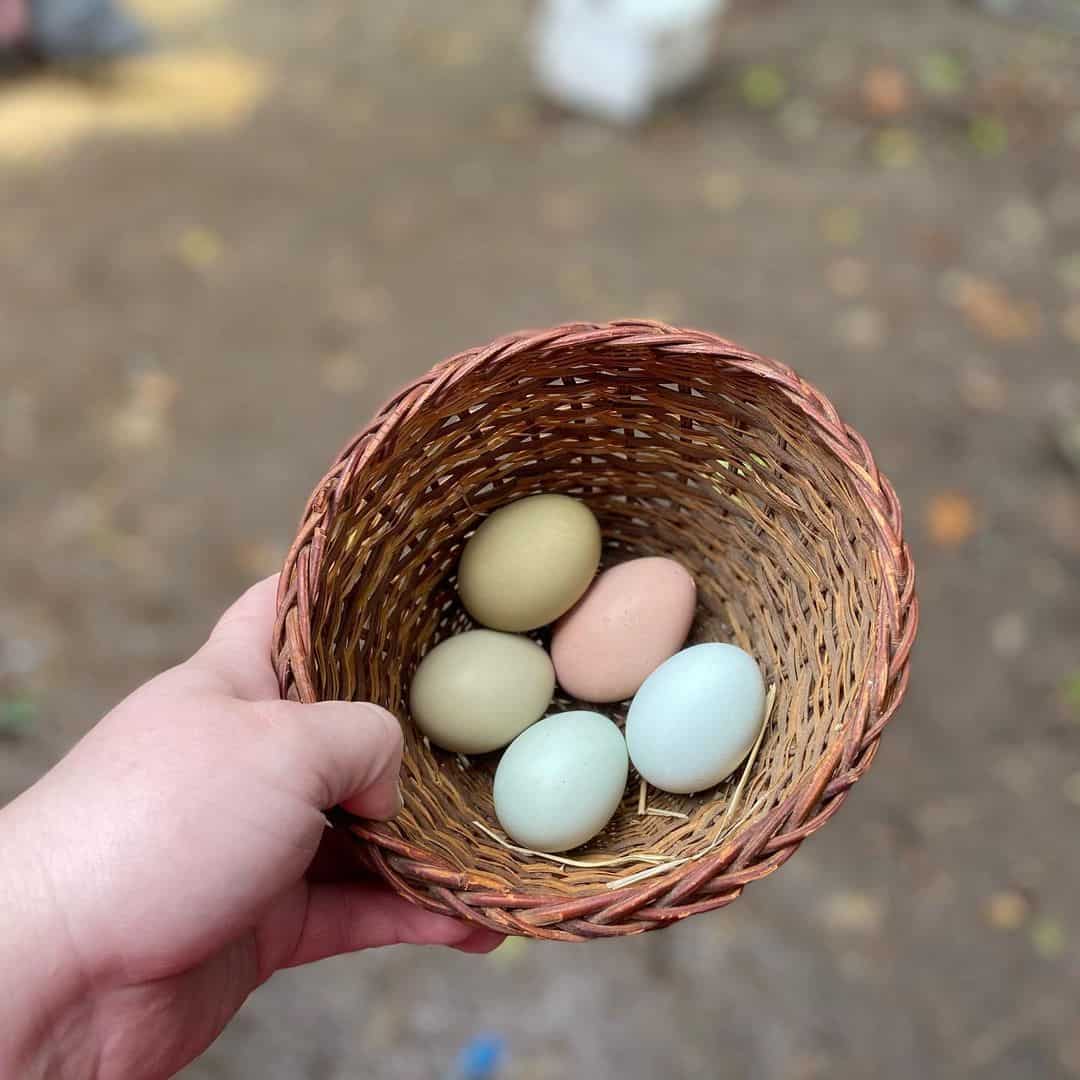
The olive-drab eggshell color is created by mating a hen from a blue egg-laying breed with a cockerel dark brown egg-laying breed. Brown eggshells have pigment only on the outside, whereas blue shells are blue inside and out.
Olive Egger chickens lay blue eggs with a brown pigment over the top, giving them a tint of olive green due to the cross-breeding. The darkness of the brown pigment determines the depth of the olive hue.
If you want to brighten up your egg basket, add some Olive Egger hens to your herd.
7. Marans

- Lifespan: 7 – 8 years
- Weigh: 5.5 – 8.5 lbs
- Egg Production: Good
- Egg Size: Large
- Egg Color: Chocolate Brown
Chefs consider Marans eggs to be among the best in the world. This bird is grown mainly kept for its eggs, despite being a dual-purpose breed.
Marans not only produce a good number of eggs, but they also produce eggs that are a lovely chocolate brown color.
However, Marans are unlike other colorful egg providers in that the particular hue varies based on the individual bird.
The eggs laid by a younger hen will be darker than those laid by an older hen.
Temperament
Marans are calm and friendly hens in general.
They don’t bully other birds, but they won’t stand for it if they’re picked on.
Despite this, they are surprisingly easy to work with.
Hens are amiable creatures who will follow you around in search of treats. They aren’t really affectionate, so don’t expect them to be lap chickens.
Because they have so much gamecock genetics, it’s no surprise that the roosters might get a little iffy at times. It would be best if you did not leave them unattended in the presence of minor children, particularly during mating season.
Egg Laying and Meat Production
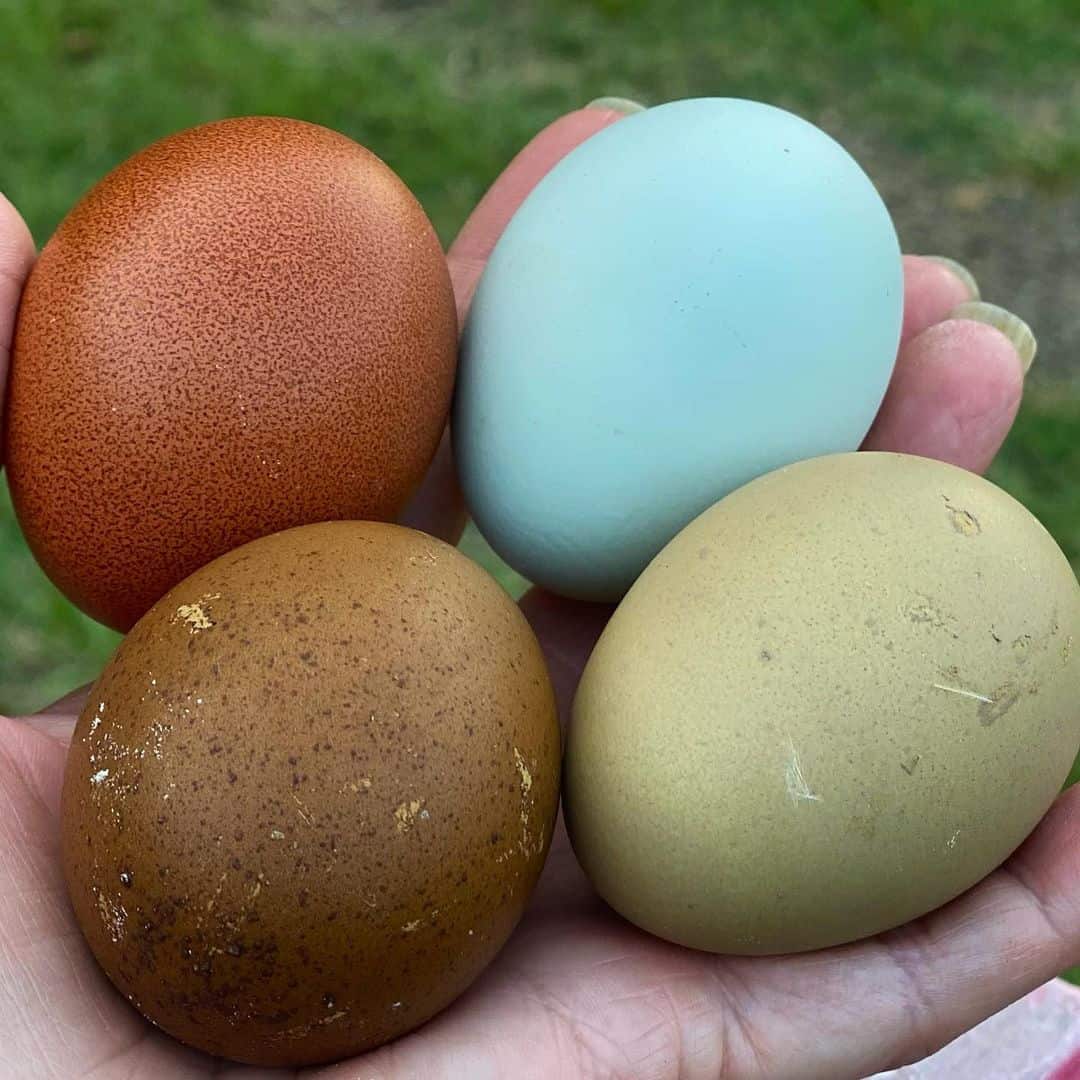
Marans are well-known for their eggs.
They lay eggs that are a rich, dark brown (nearly chocolate) color.
Each year, they should lay between 150 and 200 eggs. If you want particularly dark eggs, however, the production rate may be significantly lower.
8. Welsummers
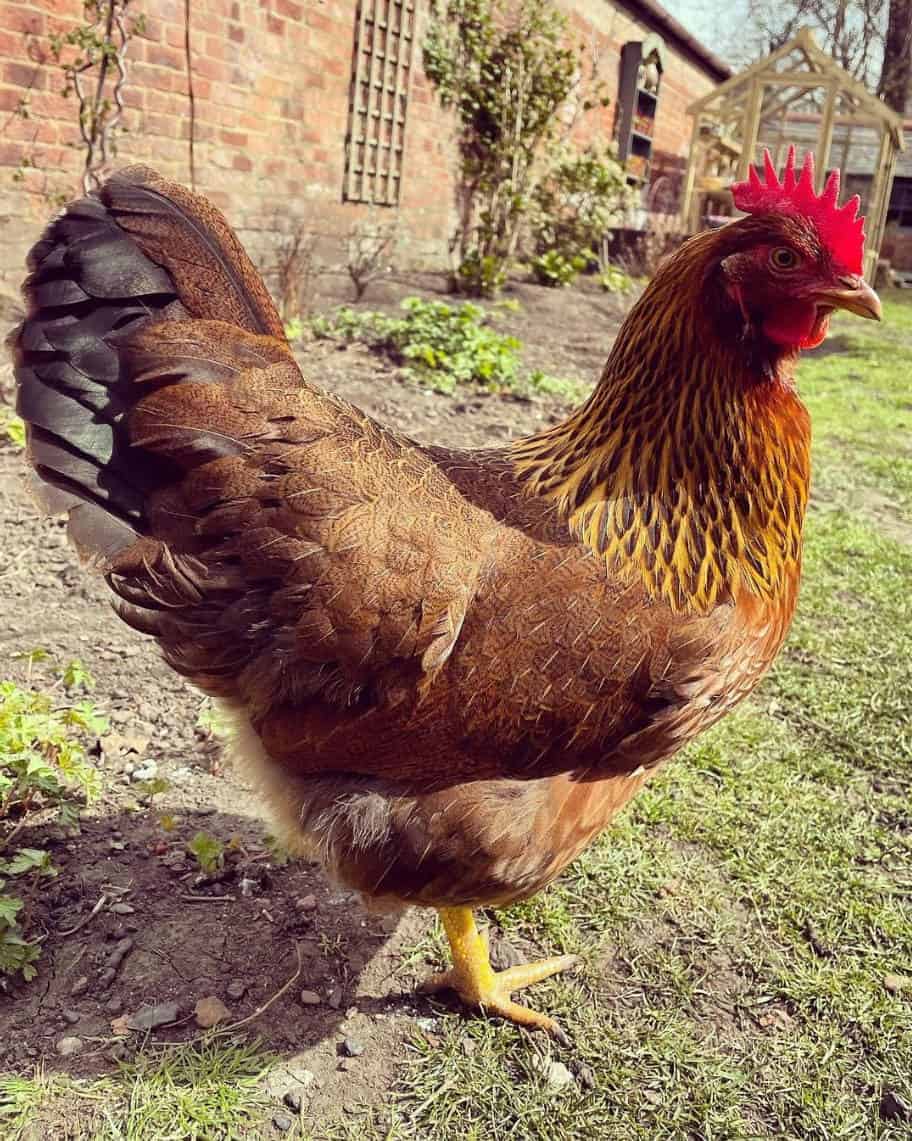
- Lifespan: 6 – 9 years
- Weigh: 6 – 7 lbs
- Egg Production: Good
- Egg Size: Large
- Egg Color: Dark Brown
The Welsummer chicken breed has only been around for a little over a century. The general partridge feather pattern on Welsummer chickens is a disservice to the bird. While the design is partridge, it is rather lovely in its simplicity.
The majority of the body is dark brown, with light brown/white feather shafts visible all around. The golden-brown neck and nape feathers have darker brown shading, creating the appearance of a golden mantle.
The rooster is unique — and quite attractive! His saddle feathers and hackles are a chestnut brown color and are free-flowing. The hue of his tail feathers, under feathers, and breast is a brilliant beetle green.
Temperament
The Welsummer is a smart bird that is also peaceful, friendly, and gentle. When it comes to other breeds, they are not overbearing. They belong somewhere between the middle and the top of the food chain, in my opinion.
They enjoy foraging in the yard and do not fly well, so they can be kept in a small area with minimal fencing if desired.
Welsummers prefer cooler weather and are hence well suited to chilly Northern regions, but they can survive heat as long as they have a cool place to go.
Egg Laying and Meat Production

The amount of eggs produced each year varies greatly between sources, ranging from 160 to 250 eggs per year. In general, the more eggs a bird produces, the less pure it is. The eggs should be a deep, rich terra cotta color, with dark speckles on occasion.
Summary
Having a colorful egg basket is really beautiful to look at.
Many people are interested in raising chicken breeds that produce colored eggs. Some are just curious, while others do want to do business with it.
However, it would be best if you determined whether it is worthwhile.
Most of the finest egg-laying chicken breeds don’t lay colorful eggs at all; in fact, top layer types like the White Leghorn lay plain white eggs.
Furthermore, keep in mind that a green egg tastes exactly like a white egg at the end of the day.
However, if you want a rainbow of colors in your egg basket, these chicken breeds can undoubtedly help you achieve your goals.


Joseph Hudson has been raising chickens for over 15 years. In 2018, he completed the Agriculture & Natural Resources program at Mt. San Antonio College. He currently raises over 1400 chickens on his 7.5-hectare farm. He keeps sharing his experience on raising healthy and happy chickens on Chicken Scratch The Foundry.
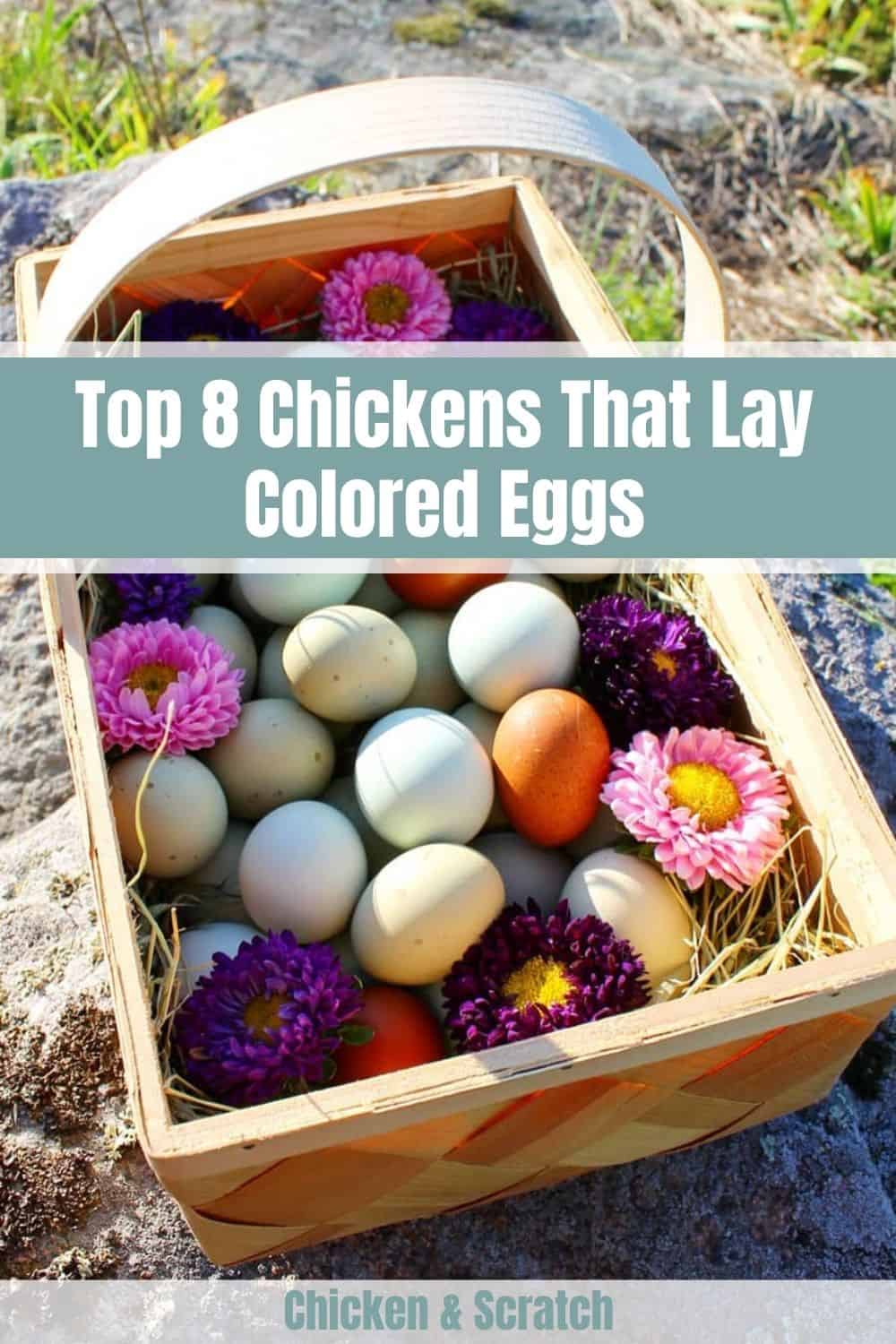







My Welsummer just started laying. Her eggs are terra-cotta brown with some speckles. Only thing is, they’re small, Not large or jumbo like I’ve read.
No worries as your girls mature the eggs will get larger.
Bill
They always start out laying small. The egg will get bigger during her second year.
Hi, How can I get those breeds and at what cost?
I think all these chickens are so beautiful and maybe people should allow several to hatch into their beautiful offspring!!!❤💙🤎💜🤎🩶🤍